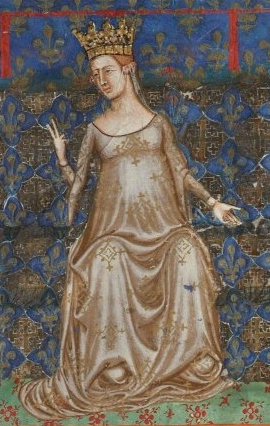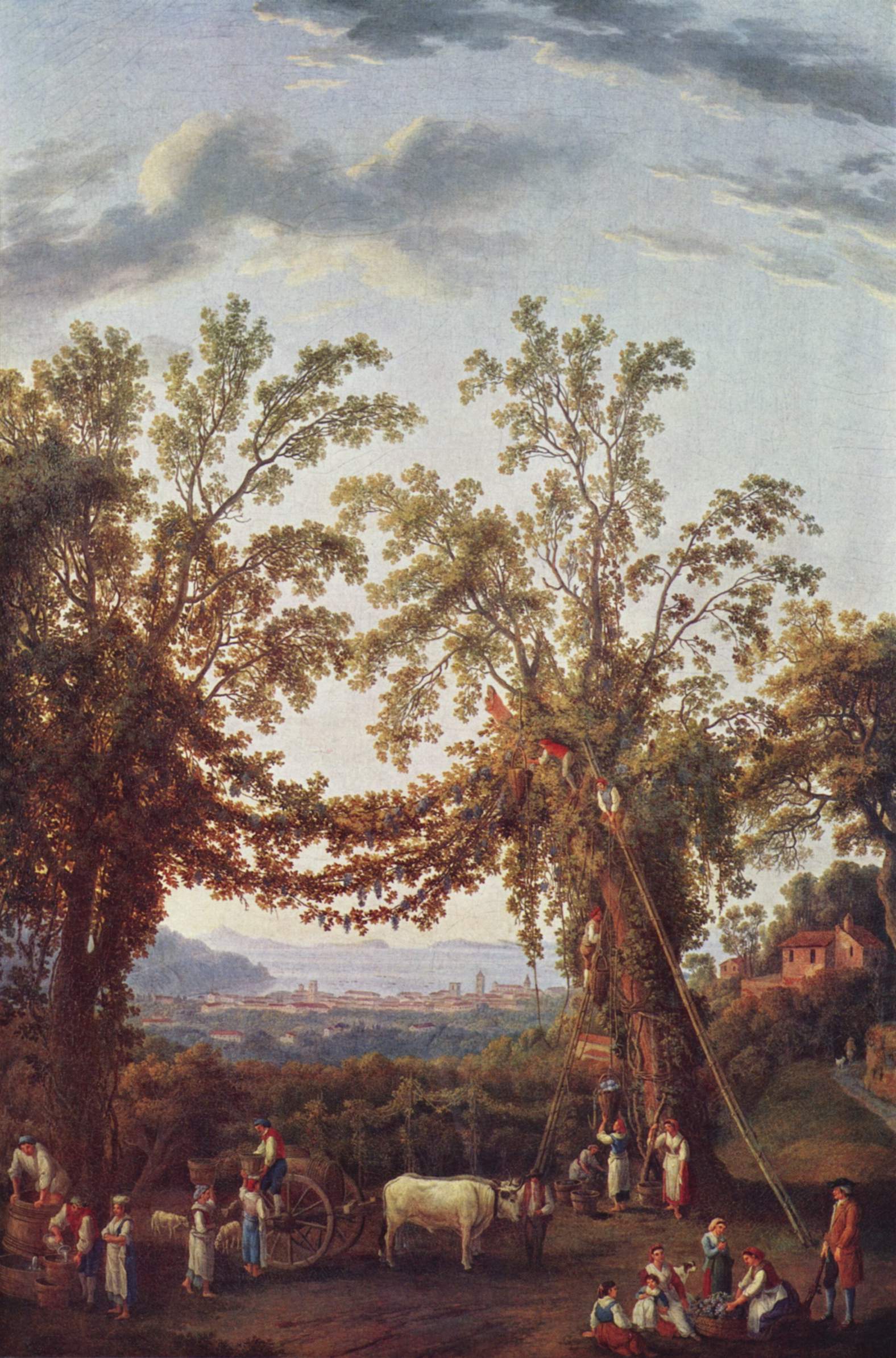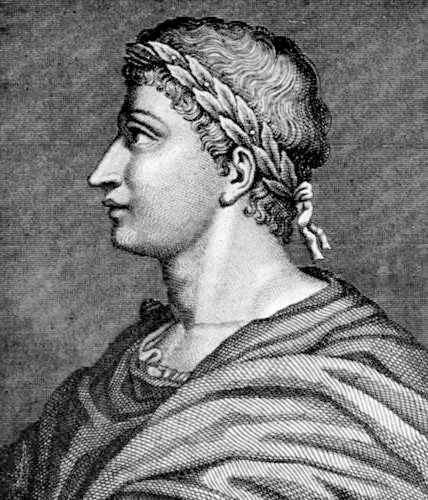|
Joanna Of Aragon (1454–1517)
Joanna of Aragon ( es, Juana, it, Giovanna; 16 June 1455 – 9 January 1517) was Queen of Naples as the second wife of King Ferdinand I. She served as regent (General Lieuntenant) of Naples between the abdication and flight of king Alfonso II 22 February 1495 until the formal succession of Ferdinand II of Naples. Born in Barcelona, Joanna was the second child of King John II of Aragon by his second wife, Juana Enríquez de Córdoba, and his youngest legitimate child. Queenship King Ferdinand I of Naples, an illegitimate son of her uncle Alfonso V of Aragon, asked Joanna's hand in marriage from John II and he accepted. After the wedding on 14 September the contract was signed in Navarre, on 5 October 1476 and the agreement was ratified on 25 November. John II gave his daughter a dowry of 100,000 gold florins and Ferdinand gave his new wife many duchies and/or cities, such as Sorrento, Theano, Isernia, Teramo, Sulmona, Francavilla and Nocera. He also gave her more than 2 ... [...More Info...] [...Related Items...] OR: [Wikipedia] [Google] [Baidu] |
List Of Consorts Of Naples
This is a list of consorts of Naples. Many Kings of Naples had more than one wife; they may have divorced their wife or she might have died. Early Byzantine Duchesses of Duchy of Naples, Naples :''See Also'': Dukes of Naples * Drosu, wife of Sergius I of Naples, Sergius I * Theodora, wife of John III of Naples, Theodora, Roman senator, senatrix, daughter of Giovanni and his wife Theodora, daughter of Theophylact I, Count of Tusculum, Theophylacto I of Tusculum & his wife Theodora (senatrix), Theodora; wife of John III of Naples, John III * Limpiasa of Capua, daughter of Richard I of Capua and Fredesenda of House of Hauteville, Hauteville, married Sergius VI of Naples, Sergius VI in April 1078 also held title of ''Protosebastos, Protosebastē'' * Eva (or Anna) of Gaeta, daughter of Geoffrey Ridell, Geoffrey Ridell, Duke of Gaeta, wife of John VI of Naples, John VI, also held title of ''Protosebastos, Protosebastē'' Royal consort of Kingdom of Naples, Naples Capetian House ... [...More Info...] [...Related Items...] OR: [Wikipedia] [Google] [Baidu] |
Sorrento
Sorrento (, ; nap, Surriento ; la, Surrentum) is a town overlooking the Bay of Naples in Southern Italy. A popular tourist destination, Sorrento is located on the Sorrentine Peninsula at the south-eastern terminus of the Circumvesuviana rail line, within easy access from Naples and Pompei. The town is widely known for its small ceramics, lacework and marquetry (woodwork) shops. The Sorrentine Peninsula has views of Naples, Vesuvius and the Isle of Capri. The Amalfi Drive, connecting Sorrento and Amalfi, is a narrow road along the high cliffs above the Tyrrhenian Sea. Ferries and hydrofoils connect the town to Naples, Amalfi, Positano, Capri and Ischia. Limoncello, a digestif made from lemon rinds, alcohol, water and sugar, is produced in Sorrento along with citrus fruit, wine, nuts and olives. History Origins The Roman name for Sorrento was . From the 8th century BC the area had the presence of a community of indigenous villages, which was a crossing point for Etruscan ... [...More Info...] [...Related Items...] OR: [Wikipedia] [Google] [Baidu] |
L'Aquila
L'Aquila ( , ) is a city and ''comune'' in central Italy. It is the capital city of both the Abruzzo region and of the Province of L'Aquila. , it has a population of 70,967 inhabitants. Laid out within medieval walls on a hill in the wide valley of the Aterno river, it is surrounded by the Apennine Mountains, with the Gran Sasso d'Italia to the north-east. L'Aquila sits upon a hillside in the middle of a narrow valley; tall snow-capped mountains of the Gran Sasso massif flank the town. A maze of narrow streets, lined with Baroque and Renaissance buildings and churches, open onto elegant piazzas. Home to the University of L'Aquila, it is a lively college town and, as such, has many cultural institutions: a repertory theatre, a symphony orchestra, a fine-arts academy, a state conservatory, a film institute. There are several ski resorts in the surrounding province (Campo Imperatore, Ovindoli, Pescasseroli, Roccaraso, Scanno). Geography Close to the highest of the Apennine s ... [...More Info...] [...Related Items...] OR: [Wikipedia] [Google] [Baidu] |
Abruzzo
Abruzzo (, , ; nap, label=Neapolitan language, Abruzzese Neapolitan, Abbrùzze , ''Abbrìzze'' or ''Abbrèzze'' ; nap, label=Sabino dialect, Aquilano, Abbrùzzu; #History, historically Abruzzi) is a Regions of Italy, region of Southern Italy with an area of 10,763 square km (4,156 sq mi) and a population of 1.3 million. It is divided into four provinces: Province of L'Aquila, L'Aquila, Province of Teramo, Teramo, Province of Pescara, Pescara, and Province of Chieti, Chieti. Its western border lies east of Rome. Abruzzo borders the region of Marche to the north, Lazio to the west and north-west, Molise to the south and the Adriatic Sea to the east. Geographically, Abruzzo is divided into a mountainous area in the west, which includes the highest massifs of the Apennines, such as the Gran Sasso d'Italia and the Maiella, and a coastal area in the east with beaches on the Adriatic Sea. Abruzzo is considered a region of Southern Italy in terms of its culture, language, history, ... [...More Info...] [...Related Items...] OR: [Wikipedia] [Google] [Baidu] |
Pope Julius II
Pope Julius II ( la, Iulius II; it, Giulio II; born Giuliano della Rovere; 5 December 144321 February 1513) was head of the Catholic Church and ruler of the Papal States from 1503 to his death in February 1513. Nicknamed the Warrior Pope or the Fearsome Pope, he chose his papal name not in honour of Pope Julius I but in emulation of Julius Caesar. One of the most powerful and influential popes, Julius II was a central figure of the High Renaissance and left a significant cultural and political legacy. As a result of his policies during the Italian Wars, the Papal States increased its power and centralization, and the office of the papacy continued to be crucial, diplomatically and politically, during the entirety of the 16th century in Italy and Europe. In 1506, Julius II established the Vatican Museums and initiated the rebuilding of the St. Peter's Basilica. The same year he organized the famous Swiss Guards for his personal protection and commanded a successful campa ... [...More Info...] [...Related Items...] OR: [Wikipedia] [Google] [Baidu] |
Pope Innocent VIII
Pope Innocent VIII ( la, Innocentius VIII; it, Innocenzo VIII; 1432 – 25 July 1492), born Giovanni Battista Cybo (or Cibo), was head of the Catholic Church and ruler of the Papal States from 29 August 1484 to his death in July 1492. Son of the viceroy of Naples, Battista spent his early years at the Neapolitan court. He became a priest in the retinue of Cardinal Calandrini, half-brother to Pope Nicholas V (1447–55), Bishop of Savona under Pope Paul II, and with the support of Cardinal Giuliano Della Rovere. After intense politicking by Della Rovere, Cibo was elected pope in 1484. King Ferdinand I of Naples had supported Cybo's competitor, Rodrigo Borgia. The following year, Pope Innocent supported the barons in their failed revolt. In March 1489, Cem, the captive brother of Bayezid II, the sultan of the Ottoman Empire, came into Innocent's custody. Viewing his brother as a rival, the Sultan paid Pope Innocent not to set him free. The amount he paid to Pope Innocent was 1 ... [...More Info...] [...Related Items...] OR: [Wikipedia] [Google] [Baidu] |
Pope Alexander VI
Pope Alexander VI ( it, Alessandro VI, va, Alexandre VI, es, Alejandro VI; born Rodrigo de Borja; ca-valencia, Roderic Llançol i de Borja ; es, Rodrigo Lanzol y de Borja, lang ; 1431 – 18 August 1503) was head of the Catholic Church and ruler of the Papal States from 11 August 1492 until his death in 1503. Born into the prominent House of Borgia, Borgia family in Xàtiva under the Crown of Aragon (now Spain), Rodrigo studied law at the University of Bologna. He was ordained deacon and made a Cardinal (Catholic Church), cardinal in 1456 after the election of his uncle as Pope Callixtus III, and a year later he became Apostolic Chancery, vice-chancellor of the Catholic Church. He proceeded to serve in the Roman Curia, Curia under the next four popes, acquiring significant influence and wealth in the process. In 1492, Rodrigo was elected pope, taking the name Alexander VI. Alexander's Inter caetera, papal bulls of 1493 confirmed or reconfirmed the rights of the Spanis ... [...More Info...] [...Related Items...] OR: [Wikipedia] [Google] [Baidu] |
Alfonso II Of Naples
Alfonso II (4 November 1448 – 18 December 1495) was Duke of Calabria and ruled as King of Naples from 25 January 1494 to 23 January 1495. He was a soldier and a patron of Renaissance architecture and the arts. Heir to his father Ferdinand I's Kingdom of Naples, Alfonso held the dukedom of Calabria for most of his life. In the 1480s Alfonso commanded the Neapolitan forces in Tuscany in 1478–79. He helped reverse the Ottoman invasion of Otranto in Apulia in 1480–81, and against the Republic of Venice in 1484. In 1486 Alfonso's repressive conduct towards the Neapolitan nobility prompted a revolt; the violent excesses of suppressing this uprising further discredited Alfonso and King Ferdinand. Under Alfonso's patronage the city of Naples was remodelled with new churches, straightened roads, and an aqueduct supplying fountains. Alfonso became King of Naples in 1494 on his father's death. Within a year he was forced by the approaching army of Charles VIII of France t ... [...More Info...] [...Related Items...] OR: [Wikipedia] [Google] [Baidu] |
Ducat
The ducat () coin was used as a trade coin in Europe from the later Middle Ages from the 13th to 19th centuries. Its most familiar version, the gold ducat or sequin containing around of 98.6% fine gold, originated in Venice in 1284 and gained wide international acceptance over the centuries. Similarly named silver ducatons also existed. The gold ducat circulated along with the Florentine florin and preceded the modern British pound sterling and the United States dollar. Predecessors The word ''ducat'' is from Medieval Latin ''ducalis'' = "relating to a duke (or dukedom)", and initially meant "duke's coin" or a "duchy's coin". The first issue of scyphate billon coins modelled on Byzantine ''trachea'' was made by King Roger II of Sicily as part of the Assizes of Ariano (1140). It was to be a valid issue for the whole kingdom. The first issue bears the figure of Christ and the Latin inscription ''Sit tibi, Christe, datus, quem tu regis iste ducatus'' (meaning "O Christ, let thi ... [...More Info...] [...Related Items...] OR: [Wikipedia] [Google] [Baidu] |
Nocera Terinese
Nocera Terinese is a town and ''comune'' of the province of Catanzaro in the Calabria region of southern Italy. In its territory, according to the last archaeological investigations, was located the ancient Greater Greece city of Terina. See also * Savuto river The Savuto is a river and valley in Calabria, Southern Italy, that lies at the intersection of the provinces of Cosenza and Catanzaro. It is also the name of a DOC wine produced in the region. The river's source is in La Sila and it empties in ... References Cities and towns in Calabria {{Calabria-geo-stub ... [...More Info...] [...Related Items...] OR: [Wikipedia] [Google] [Baidu] |
Francavilla Marittima
Francavilla Marittima is a town and ''comune'' in the province of Cosenza in the Calabria region of southern Italy. It is known for the Timpone della Motta, a hill which was the site of an Oenotrian and ancient Greek Ancient Greek includes the forms of the Greek language used in ancient Greece and the ancient world from around 1500 BC to 300 BC. It is often roughly divided into the following periods: Mycenaean Greek (), Dark Ages (), the Archaic peri ... settlement and sanctuary. References Cities and towns in Calabria {{Calabria-geo-stub ... [...More Info...] [...Related Items...] OR: [Wikipedia] [Google] [Baidu] |
Sulmona
Sulmona ( nap, label= Abruzzese, Sulmóne; la, Sulmo; grc, Σουλμῶν, Soulmôn) is a city and ''comune'' of the province of L'Aquila in Abruzzo, Italy. It is located in the Valle Peligna, a plain once occupied by a lake that disappeared in prehistoric times. In the ancient era, it was one of the most important cities of the Paeligni and is known for being the native town of the Roman poet Ovid, of whom there is a bronze statue, located on the town's main road and named after him. History Ancient era Sulmona was one of the principal cities of the Paeligni, an Italic tribe, but no notice of it is found in history before the Roman conquest. A tradition alluded to by Ovid and Silius Italicus, which ascribed its foundation to Solymus, a Phrygian and one of the companions of Aeneas, is evidently a mere etymological fiction. The first mention of Sulmo occurs in the Second Punic War, when its territory was ravaged by Hannibal in 211 BC, who, however, did not attack the city itse ... [...More Info...] [...Related Items...] OR: [Wikipedia] [Google] [Baidu] |








